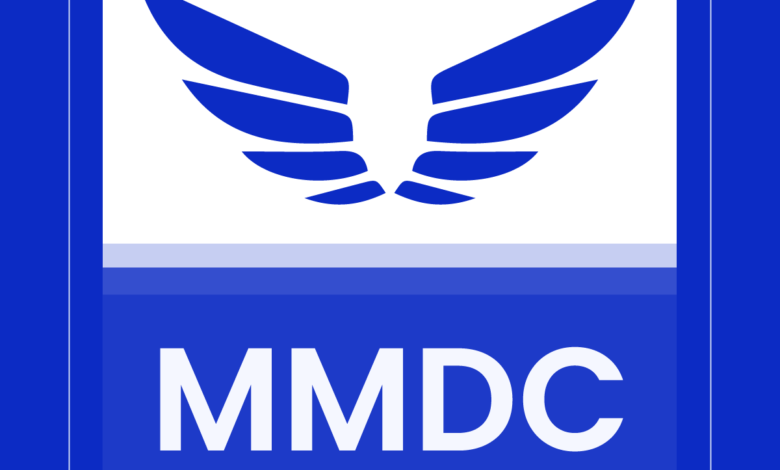Deep Dive into Mystic Media’s Web Development Services

An Interview with Jim Moore and Kristine Morante of MMDC
By Andrew Harris,
Dive into Mystic Media’s commitment to excellence in web development services in this dynamic discussion with Jim Moore, Founder of Mystic Media, and Kristine Morante, Operations Manager. Moore and Morante offer valuable insights from their roles within MMDC to navigating challenges and envisioning the industry’s future.
Q1. Can you share a brief overview of your role at MMDC and your experience in web development?
Jim Moore: My experience in web development started about 15 years ago. And it was a whole different animal back in those days. Over the years, as my role with MMDC has expanded, my focus on web development has narrowed. Luckily, we have a team of developers who are very talented and focused on the actual web development that we do, allowing my role to focus on two equally important components. One, I think of as public-facing, representing Mystic Media and the value our team provides to the public, our prospects and clients. The other part of my role is team-facing; it’s my responsibility to recruit, retain, and make happy the most incredible bunch of folks who ever worked for a digital agency, which are the excellent folks who deliver value to our clients. My web development experience is long, but I was once stronger with its technical aspects. However, I maintain a general knowledge of web development to properly represent our client’s needs to the more technically oriented folks on our team.
Kristine Morante: As operations manager for MMDC, my primary responsibility is helping Jim with strategy development, planning, evaluation, and execution for our clients. I am also responsible for developing and implementing processes within the team. I also help Jim with client relation management, for example, assigning and coordinating tasks for our team members and communicating with clients to whom we offer our web development services. I also served as the point of contact for clients before we expanded the roles and added more members to our team.
Q2. What sets MMDC apart regarding website development services compared to other agencies?
Jim Moore: We recognize our clients have thousands of choices in folks who do the same thing we do, especially regarding the technical aspects of our work. The options are endless, from college kids looking to do gig work to other agencies. What sets us apart is that our core values are different from those of other agencies, in my experience. To be specific, we’re committed to ensuring we deliver value in everything we do. It is a unique quality to how we do business.
Secondly, our core values include transparency and accountability. It’s part of our process and philosophy. It’s part of every interaction with clients that we tell them exactly what we will deliver. We give them the tools to measure what we say we’re doing right so that they can come back to us and say “you said you were going to do this, and the data says this: how do we make this better?”
We want to inform our clients about the pricing of our services, the outcomes they can expect, and the tools they can use to measure those outcomes. We also ensure that our communications are such that they never need to ask us for anything related to their project. We want to be proactive about what we’re doing. My personal experience is that one of the worst things in the world is to have a great, big, expensive project running and have to ask somebody about what’s going on, when things are going to be complete, what are you doing? We want to resolve that potential anxiety for our clients and emphasize communication about what we’re doing. So, our service and general philosophy set us apart from other agencies. We’re technically capable of anything anyone else can do, but that makes an even playing field for what we do; what separates us is how we approach that.
Q3. Walk us through the typical process of working with a client on developing a website.
Jim Moore: Our process generally begins with some kind of interaction with a prospect. The original communication aims to learn a little about the prospect and get us to a point where we can have a discovery conversation. That’s a more in-depth question-and-answer interview with the prospect, during which we learn as much as possible about their business, goals, and, importantly, their unique value proposition. There is something that makes every business unique, and that’s what we need to communicate for our clients. There may be a thousand shoe stores, but why is your shoe store the best?
After we complete that discovery conversation, we develop a project proposal. That proposal speaks to our core commitments: we include what we will deliver and what it will cost, and we define who the audience is that we will target. We also describe what the outcome should be; we call this our successful visit philosophy – here’s what a successful visit to your website would look like, and here’s how you could measure it. After sharing that with the client, we usually go back and forth with the client, generally a couple of times, to ensure that the proposal is nailed down how they’d like it to be. We expect they will want changes, and we encourage that because it will be the blueprint for what we do for you. So let’s make sure that it’s right.
After the proposal is approved, the project will go to the design team. The design team will develop a couple of designs that the client can look at and make suggestions on. Once a design is agreed upon, it will go to the development team, which is when we start the actual nuts and bolts of their project. An essential part of that is communication with a client and coordinating many things in the back end, both with our team and our communications with the client.
Kristine Morantte: After the potential client accepts the proposal, I send out the welcome pack. This includes giving them access to our communication system, which we use to provide updates from our development team. The system usually sends updates daily or weekly. After the welcome pack, we set up a bi-weekly meeting because we must have ongoing progress meetings with our clients to ensure we stay current with the client’s expectations.
Once those two items are in place, I will assign tasks to our development and design team members and maintain continuous communication with our clients.
Q4. How do you approach designing and developing a website to ensure it aligns with the client’s brand and goals?
Jim Moore: That comes back to that discovery process. It is the most crucial element of the entire project process to ensure that we correctly establish what our clients are trying to accomplish, design strategies for achieving that, and then make sure we communicate those in a way that the client can understand. In the discovery process and the proposal, those two elements are where we capture that, and the key to that is communication.
My experience with other agencies is that if we could go to the adage when you only have a hammer everything looks like a nail. Different agencies often have a skill set and try to bend projects to fit the skill set. For example, if they know we can develop in this language and use this platform, we must make the project fit our abilities and skill set. At MMDC, our approach is different than that. Our expertise is comprehensive, and we’re flexible in how we approach things.
So, our communication during the discovery process and proposal is not focused on how to make this fit what we can do but on how to make what we can do work for the client. In other words, we design the strategy for success and then do the technical part. That’s the most crucial point of differentiation about MMDC. We’re 100% invested in what the client wants to accomplish, not how we can make this work with our skill set. And the key to that is good communication.
Kristine Morante: The deciding factor in ensuring that we align with the client’s branding comes back to the outcome of the initial discovery call. Jim does a good job relaying the message to our design team, giving instructions on how the client wants the project to go and giving advice on the outcome so the design team can develop the best strategy.
Q5. Can you share a success story or memorable project you’ve worked on at MMDC?
Jim Moore: Having done this for 15 years in general from the very top level, I’m confident that websites we’ve developed for our clients have sold millions of dollars in goods and services and enjoyed millions of visitors over the years and thousands of communications with customers. The projects I enjoy the most include an old site that needs to be fixed. Or a site that the client is upset about. Projects that you have to wonder whether or not you want to take on because you’re starting from a point where someone’s not satisfied, and one of your goals is to get them to satisfaction.
Whatever the case, we come into that project, go through that discovery process, and clearly understand what we need to accomplish on behalf of our clients. In the end, the clients are always thrilled with the work we provide. So, from a personal standpoint, those are the greatest successes.
Kristine Morante: My favorite project is one we worked on for our realtor client. We developed their website from scratch, and it was challenging because it involved an external remote team and required a lot of time coordination. Aside from our web development services, the project also involved photography, which meant the expectations weren’t just related to the website and the photography results. To this day, they are still a great client of ours.
Q6. What are some common challenges you face during the website development process, and how do you overcome them?
Jim Moore: Regarding my interaction with projects we bring on, the challenge is usually the communications element. Specifically, it is trying to take someone’s dream website, something they can only imagine and communicate that technically so that our design and development teams can make it a reality. While also trying to translate what may be a very technical process for a client who doesn’t know anything about web development services, taking information from the design team and making that valuable information for a client who doesn’t know that language. It’s an enjoyable challenge, but it is a challenge, and I think it’s one of the most essential parts of our work.
That’s the challenge, and that’s inherent in almost every project because we don’t develop websites for other web development services. We work with restaurants, pharmacies, and lending institutions; their specialty is not web development. They know what they want to accomplish, and it’s our job to communicate that in a valuable way throughout the process. So that’s what I would point out as challenging. Again, I like to emphasize the word challenge because problems are rare, challenges we can expect.
Kristine Morante: I agree that the common challenge is communicating what’s needed from our client to our internal team and communicating our progress from the development team to clients. I have to explain it in different, very straightforward terms.
Q7. How does MMDC stay updated with the latest trends and technologies in web development to provide cutting-edge solutions to clients?
Jim Moore: I would point to our social media feeds; you’ll often see me share on our social media feeds what it is I read daily, and I have a list of publications that I go through each day and pick out those articles that I think would be pertinent to every aspect of our business whether it’s web development services, lots of making sure that we’re staying up on any certifications that we have. I also ensure I’m relying on a team of good people. Our development team members are the experts in what’s vital in web development right now. I often go to them with an idea based on something I’ve read, and they help me make that practical or point out where I might have misunderstood.
As I said at the beginning of the conversation, my skill in web development is different from what it used to be, but I do keep up with the general trends in web development services and what regulations might be changing that would impact various clients we work with. You might not think about things like cybersecurity or keeping up with ADA regulations. Those are all crucial elements of web development; if we’re not experts at those things, we are not doing the best possible job of making usable information for our clients.
Kristine Morante: I like reading a lot and have set up Google Alerts for important industry keywords. Mostly, with the marketing side, I leave the web development side of things to Jim and our development team.
Q8. What advice would you give businesses or individuals looking to invest in website development services?
Jim Moore: Doing your research before talking with a web development service provider on a level doesn’t make you an expert, but it at least makes you informed. If you have some idea of what a web development agency will talk to you about and understand the vocabulary they use, that would be helpful. I’ve also found several articles, and we’ve also published a blog about this, about specific questions you would want to ask any agency you’re going to work with. Those questions range from what kind of credentials you should be looking for from the agency and how they should answer specific questions to red flags you should be aware of.
Education is essential; you don’t have to be an expert in web development; that’s not our expectation of any client, but do your due diligence before you start talking with service providers. The other piece of advice I have is to be sure to get a couple of quotes. We know from our own experience how much web development costs can vary. So, talking to a couple of agencies and getting specific quotes is important. The less expensive isn’t always the way to go; you need to be sure you’ll get what you’re paying for, but that doesn’t necessarily mean that the most expensive is the way to go, either. Due diligence is essential, and I would also advise anybody never to succumb to pressure. Our approach is very passive, and we give our prospects every opportunity to invite us to work with them. But we never sell them anything, and I would caution anybody who gets involved with a web developer who is pressuring them into a sale to find somebody else.
Kristine Morante: I recommend looking at your website as an investment. Not just when working with us; that advice is for anyone. Even myself, as someone who has tried to build their own website – sometimes the things you think you can DIY seem easy at the start but can end up with a lot of wasted time and effort. So, consider your website as an investment.
Jim Moore: That’s an excellent answer, Kristine. We’ve recently discussed that in a meeting, saying your business deserves better than I built it for free in 15 minutes. You wouldn’t do that for the building that your business operates out of, right? Your website is the first line of communication; it’s the ambassador for your business online, and it continues to grow even more critical over time.
Q9. How does MMDC ensure client satisfaction and long-term success with their website after launch?
Kristine Morante: It’s continuous communication with our client while doing the project and even after the project. I’ve learned while working at MMDC the importance of continuously surveying your clients, even if it’s just regarding basic tasks that we’ve done. From changing a password to changing the font on a website, we always ask how we are doing and if there’s something that we can improve on. We genuinely value transparency. We try to make our clients feel that we are a safe space and that they can be open with us. So, the answer is communication, being transparent and acknowledging their feedback.
Jim Moore: I agree a hundred percent with what Kristine just shared and hope to live up to what she’s committed to doing in all my interactions. I would enhance that answer by adding that many of our clients have been with us for 15 years and work on a retainer basis. I think that speaks to us being successful with the commitment to Kristine just described. The best clients are those where we have remained their web development agency for many years, which is valid for several clients. Many continue to work with us for the next iteration of their current website or project. In the 15 years I’ve been doing this, I’ve never had an unsatisfied client. I’m not aware of a client that we’ve ever done business with that left our relationship feeling like we didn’t live up to the commitment that Kristine described.
Q10. Finally, what excited you the most about the future of web development at Mystic Media?
Jim Moore: Generally, web development continues to grow and become more exciting. For the lifetime that I’ve been involved in the industry, there have been several occasions where the doom and gloom come out that something will end web development as we know it. The current buzz now, of course is AI. People think everyone can do everything themselves because they’ve got AI to do it on their behalf. Frankly, that doesn’t bother me in the least. If we were to throw AI at our clients, it would be like asking them to be web developers. I think the web development field is exciting, and the possibilities for what we can accomplish on behalf of our clients gets increasingly exciting. AI is a great thing. It helps us do a better job for our clients. It doesn’t replace web development for most people we work with. Things change, and that’s good. We have new rules and regulations that we adhere to, new development protocols that we have to adhere to, and that’s all very exciting. I think the future of web development remains bright.
Kristine Morante: Regarding the future of web development, I’m just excited that we are embracing the changes as they happen, and we’re not left behind. As a team, we’re lucky because Jim is open-minded about incorporating new technologies and is not stagnant. So that’s what gets me excited – trying out new ideas with the team.
Jim Moore: The future will be owned by those who are most flexible. A wiser mind than mine said that, and it always sticks with me. Those who are the most adaptable will excel in the future.
Visit MysticMedia.com for more information or to contact Jim and Kristine




